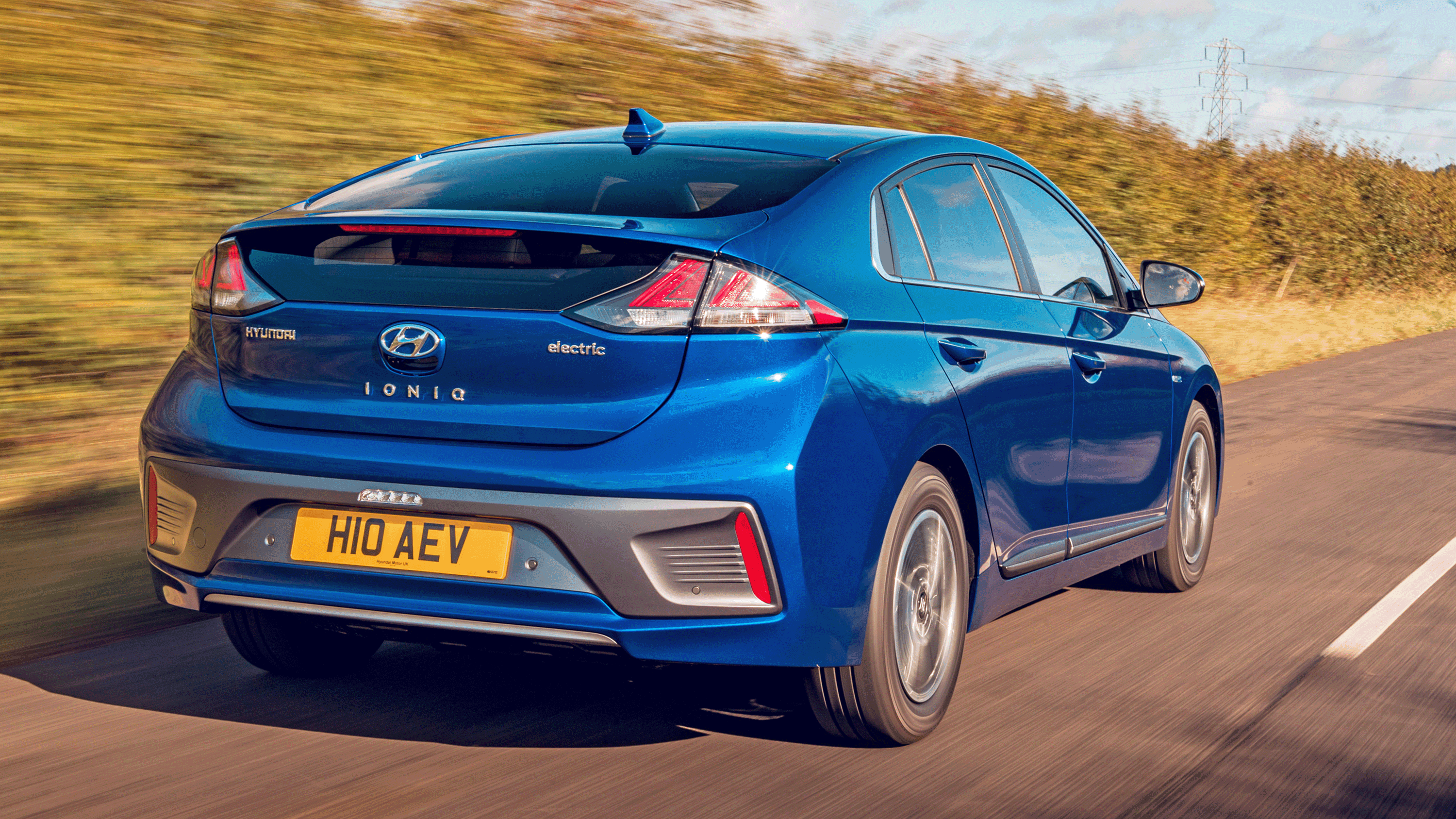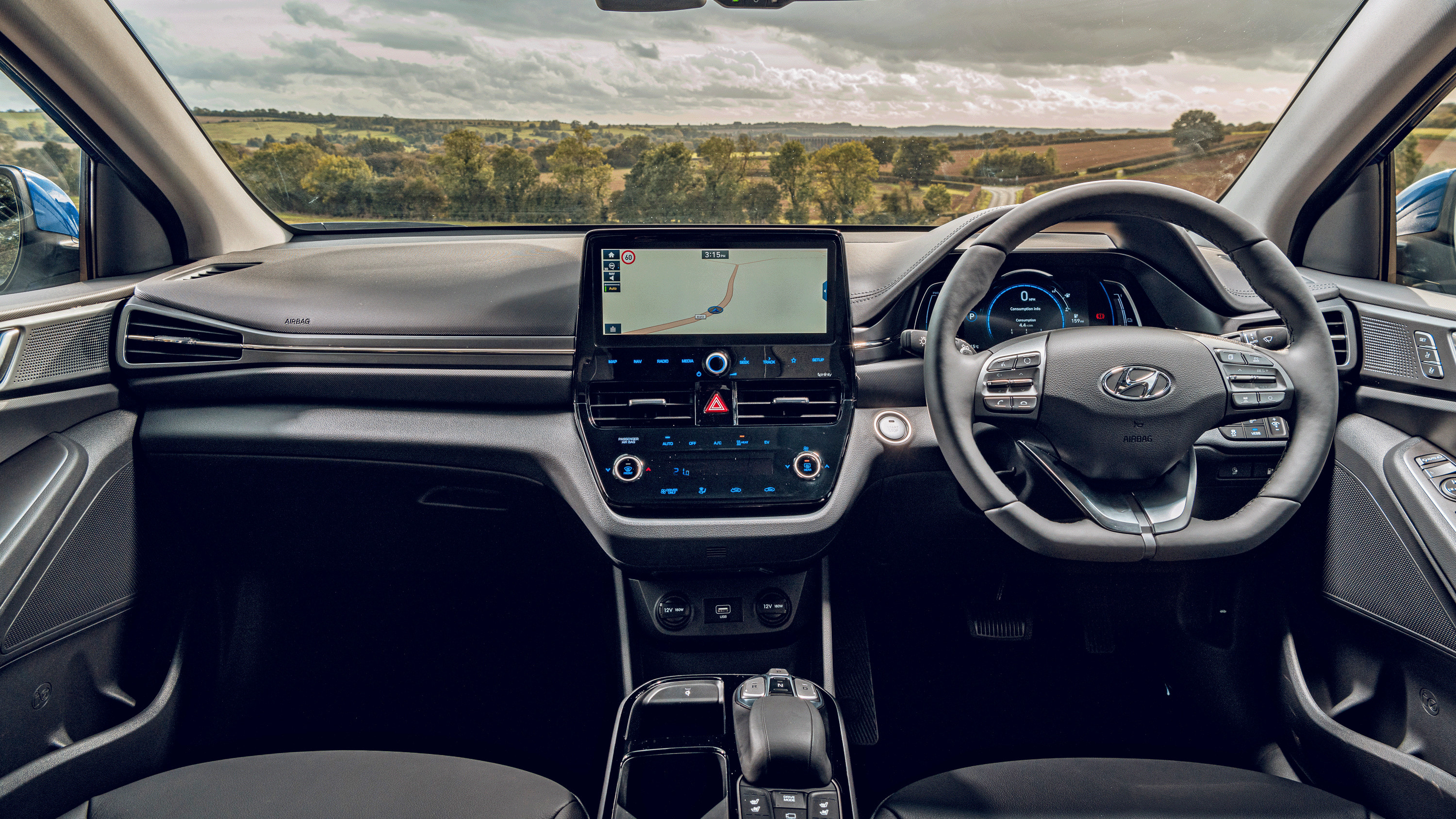Hyundai Ioniq Electric (2016-2022) Review
Useful range and a roomy interior make the Hyundai Ioniq an appealing electric prospect
Strengths & weaknesses
- Up to 193 miles on a single charge
- Smooth and quiet even on poor road surfaces
- Spacious interior with room for five adults
- Space-age styling won't be for all
- Long-distance driving still requires planning
- Diesel cars are cheaper
The electric vehicle is finally turning a corner, with year-on-year UK registrations slowly increasing by around 10-12 per cent and the charging network expanding to cover more locations with every month that passes.
Hyundai is one such company and its Ioniq model was the first to be offered in the UK in electric, hybrid and plug-in hybrid flavours, which will hopefully be enough to appeal to every green appetite.
Of course, the plug-in and self-charging hybrid variants will likely find homes with those looking to reduce their fuel bills and carbon footprint without the worry of running out of juice on the M25 but for customers wanting to completely cut ties with the petrol stations, the Ioniq Electric makes an interesting proposition.
The Ioniq Electric was previously available for less than £25,000, however prices have crept up to more than £32,000 more recently. It was, and remains, pricier than similarly equipped Renault Zoe and Nissan Leaf alternatives, however it offers more usable space than a BMW i3 and more range than early versions of the Kia Soul EV, making it an interesting proposition.
At first, the 28kWh battery and 120hp motor were a little disappointing, however updates to the Ioniq Electric with a larger 38kWh battery meant almost 200 miles of range under the right conditions, which means spending a little extra on one of these is worth it. Power was up to 136hp too, which matches the Renault Zoe, Vauxhall Corsa-e and Peugeot e-208.
We'll let you cast judgement on the exterior styling but the interior is well kitted-out, if a little bit cheap and flimsy. All of the buttons and dials are laid out intuitively and everything feels like a 'normal' car should.
All Ioniq EVs come equipped with an eight-inch touchscreen display and navigation, which pack bespoke features like an electric range radius and a list of local charging spots, as well as the ability to navigate to sockets when batteries are getting low.
Plus, customers get Bluetooth connectivity, Android Auto and Apple CarPlay, wireless phone charging, and rear parking sensors with a camera guidance system.
It's quite the suite of technology and life inside the vehicle is made even more comfortable by the soft suspension, pliant tyres, featherweight steering and ease of driving.
Owners simply engage the shift-by-wire system into 'Drive' by pressing a button, depress the accelerator and let the car do the rest. The instantaneous torque of the electric motors does a great job of whizzing the car up to speed and it will happily tackle the 0-62mph in 9.9 seconds when Sport mode is enabled, as this unleashes the full force of the batteries.
Don't be fooled, this is no performance machine but it does go about its business with minimal fuss and motorway cruising is both quiet and effortless.
There is a compromise on interior quality and the boot space is relatively poor at 350-litres (you can thank the bulky battery packs for that) but if you can overlook these two things, the Ioniq Electric could prove a very affordable and practical everyday car.
Key facts
| Warranty | 5 years / unlimited mileage |
|---|---|
| Boot size | 350 litres |
| Width | 1820mm |
| Length | 4470mm |
| Height | 1450mm |
| TAx | A (Free) |
Understanding Hyundai Ioniq Electric names
Trim level Premium
Just two trim styles are offered on the Ioniq Electric (Premium and Premium SE). The hybrid, however, comes in an entry level SE trim.
Hyundai Ioniq Electric Engines
The beauty of the Hyundai Ioniq Electric is that there is no engine to pump out noxious fumes and drain wallets with constant trips to the petrol or diesel pumps.
Granted, there is an argument that says some pollutants are produced when creating the electricity to power the car but at a local level, it is a much cleaner and greener way to get around.
Charging batteries to around 80% takes about half an hour using a 100kW direct current (DC) fast charger, though most people will end up charging overnight using a 7kW AC supply.
The electric motor and battery pack in the Ioniq Electric are slightly more powerful than those used in the hybrid, which sees a 1.6-litre petrol engine mated to a more basic electric propulsion system, while engineers have stripped out weight where possible to increase the range.
While the max range of 193 miles (when equipped with the 38kWh battery) will be affected by the use of air-conditioning (particularly heating), radio and even weather conditions, a long test drive with the Ioniq Electric revealed that it would be fairly easy to get close to that figure.
Interestingly, there is also a pair of paddle shifters located behind the steering wheel that, rather than flicking up and down the gears, selects the level of regenerative braking.
Styling also favours function over form, with a closed front grille in the EV models improving aerodynamics and reducing drag. Plus, Hyundai has used recycled or 'ecologically sensitive' materials in much of the cabin.
For example, the interior door covers are made of natural plastic combined with powdered wood and volcanic stone, raw materials extracted from sugar cane are partly applied on the headlining and carpet and the paint is made with renewable ingredients extracted from soybean oil.
Hyundai Ioniq Electric Trims
Premium and Premium SE
Just two trim levels are offered on the Hyundai Ionic Electric and this is because the starting price of the 'entry-level' models is £9,000 more than a similar hybrid version.
As a result, Hyundai has lavished all of its Ioniq EVs with the sort of kit that typically comes on its mid-range hybrid models. That means 16-inch alloy wheels, LED headlamps and adaptive cruise control all come as standard.
Inside, the cars are treated to navigation with TomTom Live service, Android Auto and Apple CarPlay, which mirrors the smartphone on the crystal clear eight-inch touchscreen display, as well as a powerful Infinity eight-speaker sound system with subwoofer.
There is also some impressive safety functionality thrown in to the package, including: Autonomous Emergency Braking, which can sense when an obstacle is in the car's path and automatically applies the anchors, Lane Keep Assist and Hill Start Assist Control.
Step up to Premium SE and the seats receive leather facings, heating and cooling functionality, as well as heating for the two rear outer seats.
There are automatic windscreen wipers with rain sensor and customers are treated to alloy pedals, front parking sensors, electrically adjustable front seats with a memory function and a Blind Spot Detection system.
Hyundai Ioniq Electric Reliability and warranty
Despite the general fit and finish of its vehicles often falling short of rivals, Hyundai's track record for reliability is fantastic. Not only was it one of the first companies to offer a five-year/unlimited mileage warranty, as opposed to the typical three, it has also regularly performed well in the annual Auto Express Driver Power Survey.
Better still, the marque is so confident in its technology that it offers and eight-year/125,000-mile warranty on the EV's battery, too.
Other Editions
.jpg?width=400&height=225&format=webp)
Ioniq (2016 – 2022)
The Hyundai Ioniq Hybrid is an affordable and eco-friendly alternative to the Toyota Prius

.jpg?width=759&height=427&format=webp)




.jpg?width=759&height=427&format=webp)
